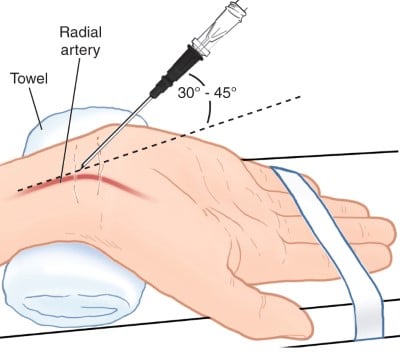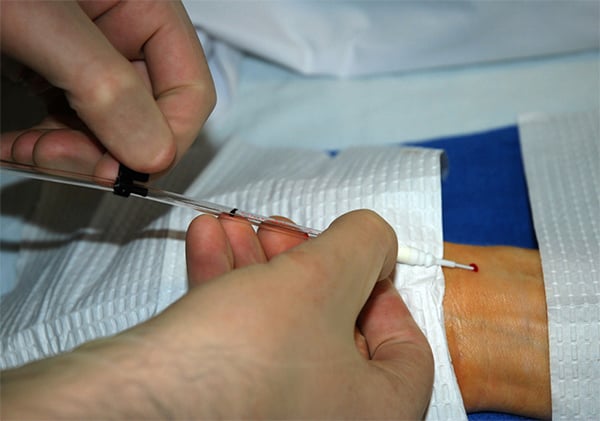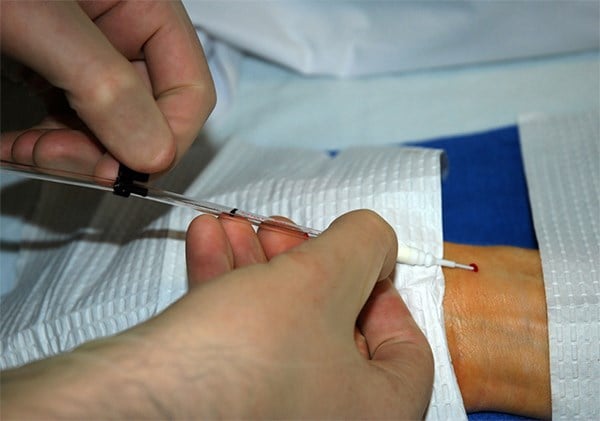Medical students gain a wide range of skills when completing clinical rotations in the ED. One of the most exciting aspects of an ED rotation is the opportunity to observe and perform numerous procedures. However, residents and attending physicians are more likely to allow a medical student to participate in a procedure when s/he demonstrates adequate knowledge of the technical skills and steps involved.
Brushing up on arterial line placement could put you in line for some real-time practice.
Background
Arterial puncture and cannulation, also known as arterial line placement or “a-line,” is commonly performed in the ED to allow for continuous blood pressure measurement and frequent arterial blood gas sampling. Generic arterial line kits include separate needle and wire components, as would be used to place a central line. However, the following guide covers fundamental knowledge for the commonly utilized all-in-one (Seldinger type) radial artery kit.
Clinical pearl: Allen’s test is used to determine whether sufficient collateral circulation to the hand is present. Before attempting line placement, apply firm pressure to both radial and ulnar arteries until the patient’s hand blanches. Release pressure from the ulnar artery and watch for color to return within 15 seconds, which suggests adequate collateral perfusion.1
What are the Steps for Performing Radial Arterial Line Placement?
Step 1. Obtain a prepackaged radial artery catheterization kit. Typically, the kit should include iodine or chlorhexidine solution, dorsal wrist extensor splint, 1% lidocaine for local anesthesia, 4×4 gauze squares, adhesive tape, nylon suture (3-0 or 4-0), needle driver, catheter-over-the-needle, and compatible spring wire guide.2,3
Step 2. Extend the patient’s wrist to identify the radial artery insertion site. Secure arm and hand with tape if needed. Palpate the radial artery to determine its location. Clean the skin with antiseptic solution, arrange sterile drape, and inject anesthetic.2,3
Step 3. With a one-piece catheter-over-the-wire, puncture the artery and insert the cannula in a continuous motion at an approximately 45-degree angle (Figure 1). After noting a flash of blood in the needle hub, stabilize the catheter-over-the-needle.2-4

FIGURE 1. Image Reproduced with permission from Reichman EF: Emergency Medicine Procedures, 2nd ed. Chapter 57. Arterial Puncture and Cannulation. McGraw-Hill, Inc., 2013, Figure 57-5.
Step 4. Using the actuating lever, advance the guide wire into the radial artery lumen (Figure 2). If resistance is encountered, do not attempt forced insertion of the guide wire. Instead, withdraw the entire unit and apply pressure to the insertion site before repeating the procedure.2-4

FIGURE 2. Image reproduced with permission from Medscape Drugs & Diseases (https://emedicine.medscape.com/), Arterial Line Placement, 2017, available at: https://emedicine.medscape.com/article/1999586-overview.
Step 5. After successful placement of the guide wire in the radial artery, push the needle hub and use a rotating motion to advance the catheter over the guide wire into the artery. Remove the guide wire and needle and note pulsatile blood flow which confirms proper placement.2-4
Step 6. Apply stopcock to stop blood flow, then suture catheter in place or use transparent adhesive dressing (eg, Tegaderm).2,3
Clinical pearl: Never inject anything into an arterial line. The elevated drug concentration in arteries and capillaries can cause severe ischemia and damage to the limb.5
Finally, medical students can seek out opportunities to gain experience in the simulation lab. Students who have practiced procedural skills in a low stress environment are more prepared and confident when performing the procedure in the ED.
Acknowledgements: Thanks to Jonah C. Gunalda, MD for providing writing assistance and language editing.
References
Oettlé AC, van Niekerk A, Boon JM, Meiring JH. Evaluation of Allen’s test in both arms and arteries of left and right-handed people. Surg Radiol Anat. 2006;28(1):3-6.
Koyfman A, Radwine Z, Sawyer TL. Arterial Line Placement. Medscape. May 15, 2017. Accessed March 11, 2018.
Reichman EF. Emergency Medicine Procedures. 2nd ed. New York, NY: McGraw-Hill Education; 2013.
Tegtmeyer K, Brady G, Lai S, Hodo R, Braner D. Placement of an Arterial Line. N Engl J Med. 2006;354(15):e13.
Iblher N, Stark GB, Penna V. Necrosis of the 4th and 5th Digits after Intra-Articular Injection of Diazepam into the Wrist. Case Rep Surg. 2011;2011:1-4.



